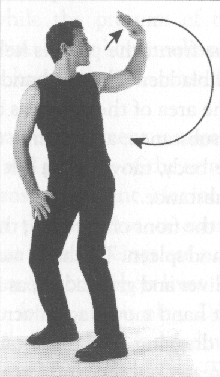
Fig. 172
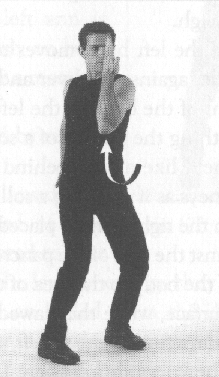
Fig. 173
Don Juan Matus defined dreaming as the act of using normal dreams as a bona fide entrance for human awareness into other realms of perceiving. This definition implied for him that ordinary dreams could be used as a hatch that led perception into other regions of energy different from the energy of the world of everyday life, and yet utterly similar to it at a basic core. The result of such an entrance was, for sorcerers, the perception of veritable worlds where they could live or die, worlds which were astoundingly different from ours, and yet utterly similar.
Pressed for a linear explanation of this contradiction, don Juan Matus reiterated the standard position of sorcerers: that the answers to all those questions were in the practice, not in the intellectual inquiry He said that in order to talk about such possibilities, we would have to use the syntax of language, whatever language we spoke, and that syntax, by the force of usage, limits the possibilities of expression. The syntax of any language refers only to perceptual possibilities found in the world in which we live.
Don Juan made a significant differentiation, in Spanish, between two verbs: one was to dream, sonar; and the other was ensoilar, which is to dream the way sorcerers dream. In English, there is no clear distinction between these two states: the normal dreaming, sueno, and the more complex state that sorcerers call ensueflo.
The art of dreaming, according to what don Juan taught, originated in a very casual observation that the shamans of ancient Mexico made when they saw people who were asleep. They noticed that during sleep the assemblage point was displaced in a very natural, easy way from its habitual position, and that it moved anywhere along the periphery of the luminous sphere, or to any place in the interior of it. Correlating their seeing with the reports of the people who had been observed sleeping, they realized that the greater the observed displacement of the assemblage point, the more astounding the reports of events and scenes experienced in dreams.
After this observation took hold of them, those sorcerers began to look avidly for opportunities to displace their own assemblage points. They ended up using psychotropic plants to accomplish this. Very quickly, they realized that the displacement brought about by using these plants was erratic, forced, and out of control. In the midst of this failure, nonetheless they discovered one thing of great value. They called it dreaming attention.
Don Juan explained this phenomenon, referring first to the daily awareness of human beings as the attention placed on the elements of the world of everyday life. He pointed out that human beings took only a cursory and yet sustained look at everything that surrounded them.
More than examining things, human beings simply established the presence of those elements by a special type of attention, a specific aspect of their general awareness. His contention was that the same type of cursory and yet sustained "look," so to speak, could be applied to the ele- merits of an ordinary dream. He called this other, specific aspect of general awareness dreaming attention or the capacity that practitioners acquire to maintain their awareness unwaveringly fixed on the items of their dreams.
The cultivation of dreaming attenti . on gave the sorcerers of don Juan's lineage a basic taxonomy of dreams. They found out that most of their dreams were imagery, products of the cognition of their daily world; however, there were some which escaped that classification. Such dreams were veritable states of heightened awareness in which the elements of the dream were not mere imagery, but energy-generating affairs. Dreams which had energy-generating elements were, for those shamans, dreams in which they were capable of seeing energy as it flowed in the universe.
Those shamans were able to focus their dreaming attention on any element of their dreams, and found out, in this fashion, that there are two kinds of dreams. One is the dreams that we are all familiar with, in which phantasmagorical elements come into play, something which we could categorize as the product of our mentality, our psyche; perhaps something that has to do with our neurological makeup. The other kind of dreams they called energy-generating dreams. Don Juan said that those sorcerers of ancient times found themselves in dreams which were not dreams, but actual visitations made in a dreamlike state to bona fide places other than this world-real places, just like the world in which we live; places where the objects of the dream generated energy, just as trees, or animals, or even rocks generate energy in our daily world, for a seeing sorcerer.
Their visions of such places were, however, for those shamans, too fleeting, too temporary, to be of any value to them. They attributed this flaw to the fact that their assemblage points could not be held fixed for any considerable time at the position to which they had been displaced. Their attempts to remedy the situation resulted in the other high art of sorcery: the art of stalking.
Don Juan defined the two arts very clearly one day when he said to me that the art of dreaming consisted of purposely displacing the assemblage point from its habitual position. The art of stalking consisted in volitionally making it stay fixed on the new position to which it had been displaced.
This fixation allowed the shamans of ancient Mexico the opportunity to witness other worlds in their full extent. Don Juan said that some of those sorcerers never returned from their journeys. In other words, they opted for staying there, wherever "there" might have been.
"When the old sorcerers finished mapping human beings as luminous spheres," don Juan said to me once, "they had discovered no less than six hundred spots in the total luminous sphere that were the sites of bona fide worlds. Meaning that, if the assemblage point became attached to any of those places, the result was the entrance of the practitioner into a total new world."
"But where are those six hundred other worlds, don Juan?" I asked.
"The only answer to that question is incomprehensible," he said, laughing. "It's the essence of sorcery, and yet it means nothing to the average mind. Those six hundred worlds are in the position of the assemblage point. Incalculable amounts of energy are required to make sense out of this answer. We have the energy. What we lack is the facility or disposition to use it."
I could add that nothing could be truer than all these statements, and yet, nothing could make less sense.
Don Juan explained usual perception in the terms in which the sorcerers of his lineage understood it: The assemblage point, at its habitual location, receives an inflow of energy fields from the universe at large in the form of luminous filaments, numbering in the trillions. Since its position is consistently the same, it stood to sorcerers' reasoning that the same energy fields, in the form of luminous filaments, converge on the assemblage point and go through it, giving as a consistent result the perception of the world that we know. Those sorcerers arrived at the unavoidable conclusion that if the assemblage point were displaced to another position, another set of energy filaments would go through it, resulting in the perception of a world that, by definition, was not the same as the world of everyday life.
In don Juan's opinion, what human beings ordinarily regard as perceiving is rather the act of interpreting sensory data. He maintained that from the moment of birth, everything around us supplies us with a possibility of interpretation, and that with time, this possibility turns into a full system by means of which we conduct all of our perceptual transactions in the world.
He pointed out that the assemblage point is not only the center where perception is assembled, but also the center where the interpretation of sensory data is accomplished, so that if it were to change locations, it would interpret the new influx of energy fields in very much the same terms in which it interprets the world of everyday life. The result of this new interpretation is the perception of a world which is strangely similar to ours, and yet intrinsically different. Don Juan said that energetically, those other worlds are as different from ours as they could possibly be. It is only the interpretation of the assemblage point which accounts for the seeming similarities.
Don Juan called for a new syntax that could be used in order to express this wondrous quality of the assemblage point and the possibilities of perception brought about by dreaming. He conceded, however, that perhaps the present syntax of our language could be forced to cover it if this experience became available to any one of us, and not merely to shaman initiates.
Something related to dreaming that was of tremendous interest to me, but which bewildered me to no end, was don Juan's statement that there was really no procedure to speak of that would teach anyone how to dream. He said that more than anything else, dreaming was an arduous effort on the part of the practitioners to put themselves in contact with the indescribable all-pervading force that the sorcerers of ancient Mexico called intent. Once this link was established, dreaming also mysteriously became established. Don Juan asserted that this linkage could be accomplished following any pattern that implied discipline.
When I asked him to give me a succinct explanation of the procedures involved, he laughed at me.
"To venture into the world of sorcerers," he said, "is not like learning to drive a car. To drive a car, you need manuals and instructions. To dream, you need to intend it."
"But how can I intend it?" I insisted.
"The only way you could intend it is by intending it," he declared. "One of the most difficult things for a man of our day to accept is a lack of procedure. Modern man is in the throes of manuals, praxes, methods, steps leading to. He is ceaselessly taking notes, making diagrams, deeply involved in the 'know-how.' But in the world of sorcerers, procedures and rituals are mere designs to attract and focus attention. They are devices used to force a focusing of interest and determination. They have no other value."
What don Juan considered to be of supreme importance in order to dream is the rigorous execution of the magical passes: the only device that the sorcerers of his lineage used to aid the displacement of the assemblage point. The execution of the magical passes gave those sorcerers the stability and the energy necessary to call forth their dreaming attention, without which there was no possibility of dreaming for them. Without the emergence of dreaming attention, practitioners could aspire, at best, to have lucid dreams about phantasmagorical worlds. They could perhaps have views of worlds that generate energy, but these would make no sense to them whatsoever in the absence of an allinclusive rationale that would properly categorize them.
Once the shamans of don Juan's lineage had developed their dreaming attention, they realized that they had tapped on the doors of infinity. They had succeeded in enlarging the parameters of their normal perception. They discovered that their normal state of awareness was infinitely more varied than it had been before the advent of their dreaming attention. From that point on, those sorcerers could truthfully venture into the unknown.
"The aphorism," don Juan said to me once, "that 'the sky is the limit' was most applicable to the sorcerers of ancient times. They certainly outdid thernselves."
"Was it really true for them that the sky was the limit, don Juan?" I asked.
"This question could be answered only by each of us individually," he said, smiling expansively. "They gave us the tools. It is up to us individually to use them or refuse them. In essence, we are alone in front of infinity, and the issue of whether or not we are capable of reaching our limits has to be answered personally."
THE MAGICAL PASSES FOR DREAMING
27. Getting the Assemblage Point Loose
The left arm, with the palm of the hand turned upward, reaches over the area behind the shoulder blades, as the trunk leans a bit forward. Then the arm is brought in an underhanded motion from the left side of the body to the front, moving in an upward thrust in front of the face, with the palm of the left hand turned to face the left. The fingers are held together (figs. 172, 173).
This magical pass is executed by each arm in succession. The knees are
kept bent for greater stability and thrusting force.

Fig. 172 |

Fig. 173 |
28. Forcing the Assemblage Point to Drop Down
The back is kept as straight as possible. The knees are locked. The left arm, fully stretched, is placed at the back, a few inches away from the body. The hand is bent at a ninety-degree angle in relation to the forearm; the palm faces downward and the fully stretched fingers point backward. The fully stretched right arm is placed in front in the same position: with the wrist bent at a ninety-degree angle, the palm facing downward, the fingers pointing forward.
The head turns in the direction of the arm that is kept at the back, and a total stretch of the tendons of the legs and arms takes place at that instant. This tension of the tendons is held for a moment (fig. 174). The same movement is repeated with the right arm in back and the left in front.
29. Enticing the Assemblage Point to Drop by Drawing Energy from the Adrenals and Transferring It to the Front
The left arm is placed behind the body at the level of the kidneys, as far to the right as it can reach; the hand is held like a claw. The clawed hand moves across the kidney area from right to left as if dragging a solid substance. The right arm is held in its normal position by the side of the thigh.
Next, the left hand moves to the front; the palm is held flat, on the right side, against the liver and gallbladder. The left hand moves across the front of the body to the left, the area of the pancreas and spleen, as if smoothing the surface of a solid substance; at the same time the right hand, held like a claw behind the body, moves from left to right over the kidneys as if dragging a solid substance.
Then the right hand is placed on the front of the body; the palm is
held flat against the area of the pancreas and spleen. The hand moves across
the front of the body to the area of the liver and gallbladder, as if smoothing
a rough surface, while the clawed left hand moves again across the area
of the kidneys from right to left as if dragging a solid substance (figs.
175, 176). The knees are kept bent for greater stability and force.
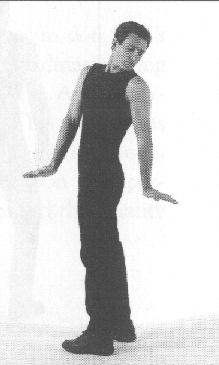
Fig. 174 |
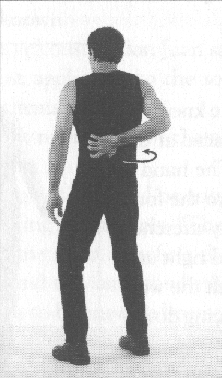
Fig. 175 |
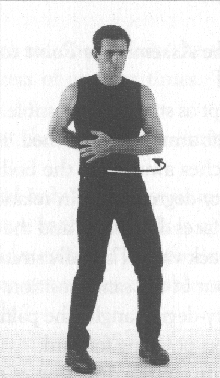
Fig. 176 |
30. Playing Out the A and B Types of Energy
The right forearm, bent in a vertical position, at a ninety-degree angle, is centered in front of the body, with the elbow almost at the level of the shoulders, and the palm of the hand facing left. The left forearm, bent at the elbow and held in a horizontal position, is placed with the back of the hand underneath the right elbow. The eyes, without focusing on either forearm, keep a peripheral view of both of them. The pressure of the right arm is downward, while the pressure of the left arm is upward. The two forces act simultaneously on both arms; they are kept under this tension for a moment (fig. 177).
Then the same movement is executed by reversing the order and position of the arms.
The shamans of ancient Mexico believed that everything in the universe is composed of dual forces, and that human beings are subjected to that duality in every aspect of their lives. At the level of energy, they considered that two forces are at play. Don Juan called them the A and B forces. The A force is employed ordinarily in our daily affairs, and is represented by a straight vertical line. The B force is ordinarily an obscure one which rarely enters into action, and it is kept lying down. It is represented by a horizontal line drawn to the left of the vertical one, at its base, making in this fashion a reversed capital letter L.
Shamans, men and women, were the only ones who, in don Juan's view, had been capable of turning the force B, which is ordinarily lying down horizontally, out of use, into an active vertical line. And consequently, they had succeeded in putting force A to rest. This process was represented by drawing a horizontal line at the base of the vertical one, to its right, and making, as a result, a capital letter L. Don Juan portrayed this magical pass as the one which best exemplified this duality and the effort of the sorcerers to reverse its effects.
31. Pulling the Energy Body to the Front
The arms are kept at shoulder level with the elbows bent. The hands
overlap each other, and they are turned with the palms down. A circle is
made with the hands rotating around each other; the movement is inward,
toward the face (fig. 178). They rotate three times around each other;
then the left arm is thrust forward with the hand in a fist, as if to strike
an invisible target in front of the body, an arm's length away from it
(fig. 179). Three more circles are drawn with both hands, and then the
right arm strikes in the same fashion as the left one.
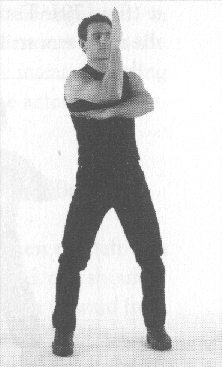
Fig. 177 |
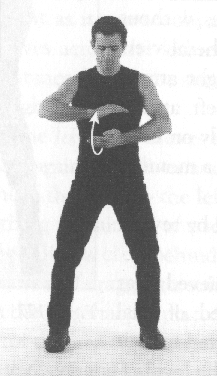
Fig. 178 |
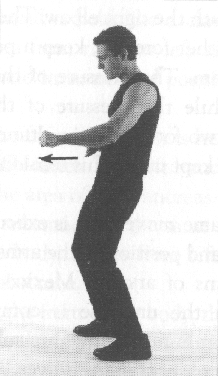
Fig. 179 |
32. Hurling the Assemblage Point Like a Knife over the Shoulder
The left hand reaches over the head to the area behind the shoulder blades and grabs, as if holding a solid object. Then it moves over the head to the front of the body, with the motion of hurling something forward. The knees are kept bent for hurling stability. The same movement is repeated with the right arm (figs. 180, 181).
This magical pass is an actual attempt to hurl the assemblage point,
in
order to displace it from its habitual position. The practitioner holds
the assemblage point as if it were a knife. Something in the
intent
of
hurling the assemblage point causes a profound effect toward the
actual displacement of it.
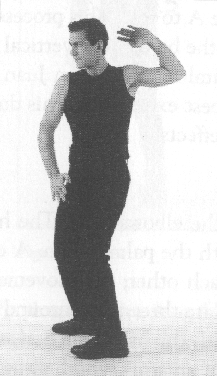
Fig. 180 |
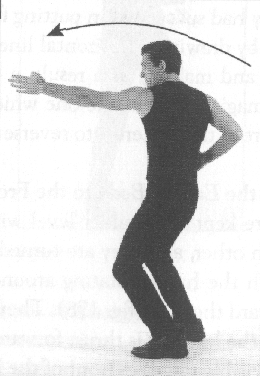
Fig. 181 |
33. Hurling the Assemblage Point Like a Knife from the Back by the Waist
The knees are kept bent as the body leans forward. Then the left arm
reaches to the back, from the side, to the area behind the shoulder blades,
grabs onto something as if it were solid, and hurts it forward from the
waist, with a flick of the wrist, as if hurling a flat disk, or a knife
(figs. 182, 183). The same movements are repeated with the right hand.
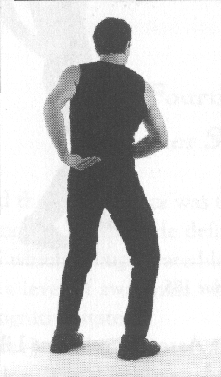
Fig. 182 |
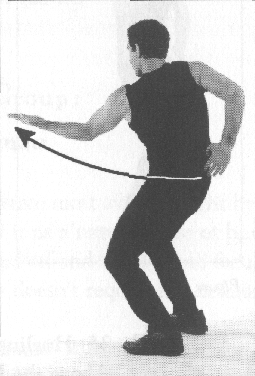
Fig. 183 |
34. Hurling the Assemblage Point Like a Disk from the Shoulder
A deep rotation of the waist is made to the left, which propels the right arm to swing to the left side of the left leg. Then the motion of the waist, moving in the opposite direction, propels the left arm to swing to the right side of the right leg. Another motion of the waist propels the right arm to swing again to the left side of the left leg. At this point the left hand reaches back instantly with a circular motion to grab onto something as if it were solid, from the area behind the shoulder blades (fig. 184). The left hand takes *it in a swinging circular motion to the front of the body and up to the level of the right shoulder. The palm of the clenched hand faces upward. From this position, the left hand, with a flick of the wrist, makes a hurling motion, as if to hurl forward something solid, like a disk (fig. 185).
The legs are kept bent slightly at the knees and a great pressure is exerted at the back of the thighs. The right arm, with the elbow slightly bent, is extended behind the body to give stability to the act of hurling a disk. This position is held for a moment, while the left arm maintains the position of having just hurled an object.
The same movements are repeated with the other arm.
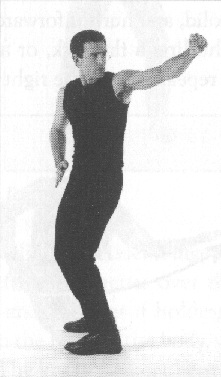
Fig. 184 |
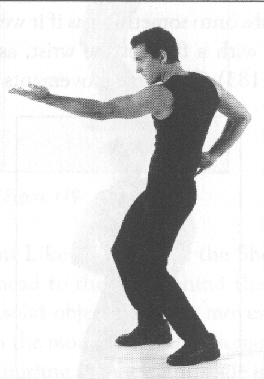
Fig. 185 |
35. Hurling the Assemblage Point Like a Ball Above the Head
The left hand moves back quickly to the area behind the shoulder blades
and grabs something, as if it were solid (fig. 186). The arm rotates twice
in a big circle above the head as if to gain impulse (fig. 187) and makes
the motion of hurling a ball forward (fig. 188). The knees are kept bent.
These movements are repeated with the right hand.
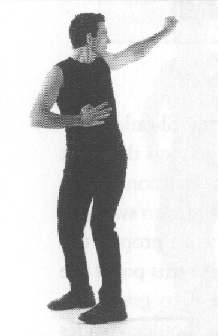
Fig. 186 |
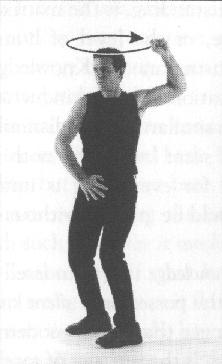
Fig. 187 |
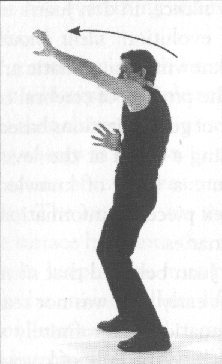
Fig. 188 |